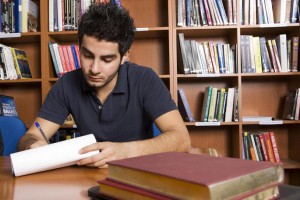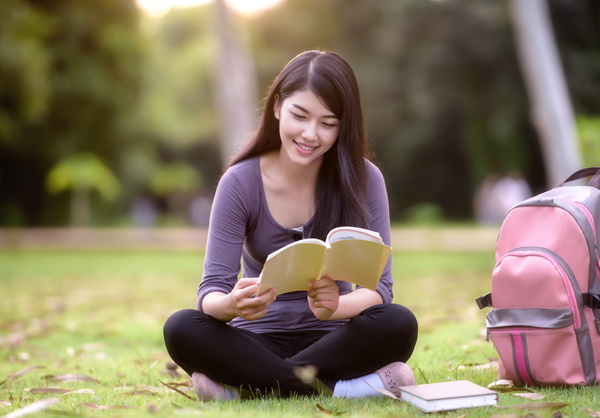Living in Malaysia
To know Malaysia is to love Malaysia - a bubbling, bustling melting-pot of races and religions where Malays, Indians, Chinese and many other ethnic groups live together in peace and harmony. Our multiculturalism has made Malaysia a gastronomical paradise and home to hundreds of colourful festivals. It's no wonder that we love celebrating and socialising. As a people, Malaysians are very relaxed, warm and friendly.
Geographically, Malaysia is almost as diverse as its culture. 11 states and 2 federal territories (Kuala Lumpur and Putrajaya) form Peninsular Malaysia which is separated by the South China Sea from East Malaysia which includes the 2 states (Sabah and Sarawak on the island of Borneo) and a third federal territory, the island of Labuan.
One of Malaysia's key attractions is its extreme contrasts which further add to this theme of 'diversity'. Towering skyscrapers look down upon wooden houses built on stilts while five-star hotels sit just metres away from ancient reefs.
Rugged mountains reach dramatically for the sky while their rainforest-clad slopes sweep down to floodplains teeming with forest life. Cool highland hideaways roll down to warm, sandy beaches and rich, humid mangroves.
For the perfect holiday full of surprises, the time is now, the place is Malaysia.
*Further information on the country can also be obtained from the Malaysian government's official portal, www.malaysia.gov.my.
Country
The Federation of Malaysia comprises of Peninsular Malaysia, and the states of Sabah and Sarawak on the island of Borneo.
Situated between 2º and 7º to the North of the Equator line, Peninsular Malaysia is separated from Sabah and Sarawak by the South China Sea.
In the northern part of Peninsular Malaysia lies Thailand, and in the south, neighbouring Singapore. Sabah and Sarawak are bounded by Indonesia while Sarawak also shares borders with Brunei.
Area
329,758 square km
Population
28.3 million
Capital city
Kuala Lumpur
People
Introduction
Having had an interesting past and being a part of the international spice route many hundreds of years ago, Malaysia has turned into a mosaic of cultures. Everything from its people to its architecture reflect a colourful heritage and an amalgamated culture. To understand Malaysian culture, you must first get to know its people.
Discover a Land of Intriguing Diversity
Malays, Chinese, Indians and many other ethnic groups have lived together in Malaysia for generations. All these cultures have influenced each other, creating a truly Malaysian culture.
The largest ethnic groups in Malaysia are the Malays, Chinese and Indians. In Sabah and Sarawak, there are a myriad of indigenous ethnic groups with their own unique culture and heritage.
Malay
Today, the Malays, Malaysia's largest ethnic group, make up more than 50% of the population, although this drops to less than 25% in East Malaysia. In Malaysia, the term Malay refers to a person who practices Islam and Malay traditions, speaks the Malay language and whose ancestors are Malays. Their conversion to Islam from Hinduism and Theravada Buddhism began in the 1400s, largely influenced by the decision of the royal court of Melaka. The Malays are known for their gentle mannerisms and rich arts heritage.
Chinese
The second largest ethnic group, the Malaysian Chinese form about 25% of the population. Mostly descendants of Chinese immigrants during the 19th century, the Chinese are known for their diligence and keen business sense. The three sub-groups who speak a different dialect of the Chinese language are the Hokkien who live predominantly on the northern island of Penang; the Cantonese who live predominantly in the capital city Kuala Lumpur; and the Mandarin-speaking group who live predominantly in the southern state of Johor.
In Sarawak this 25% is made up of a mix of dialect groups including Foochow, Hakka, Hokkien, Teochew, Hainanese and Puxian Min while in Sabah the population of Chinese drops to around 10% who predominantly speak the Hakka language.
Indian
The smallest of three main ethnic groups, the Malaysian Indians form about 10% of the population. Most are descendants of Tamil-speaking South Indian immigrants who came to the country during the British colonial rule. Lured by the prospect of breaking out of the Indian caste system, they came to Malaysia to build a better life. Predominantly Hindus, they brought with them their colourful culture such as ornate temples, spicy cuisine and exquisite sarees.
Indigenous Ethnic Groups
Peninsula Malaysia
The general term used for any of the indigenous groups that are found in Peninsular Malaysia is 'Orang Asli' which literally translates as the 'original people'. They are divided into three main tribal groups: Negrito, Senoi and Proto-Malay. The Negrito usually live in the north, the Senoi in the middle and the Proto-Malay in the south. Each group or sub-group has its own language and culture. Some are fishermen, some farmers and some are semi-nomadic.
Sabah
The largest indigenous ethnic groups of Sabah's population are the Kadazan Dusun, the Bajau and the Murut.
Kadazan Dusun
The largest ethnic group of Sabah, the Kadazan Dusuns form about 30% of the state's population. Actually consisting of two tribes; the Kadazan and the Dusun, they were grouped together as they both share the same language and culture. However, the Kadazan are mainly inhabitants of flat valley deltas, which are conducive to paddy field farming, while the Dusun traditionally lived in the hilly and mountainous regions of interior Sabah.
Bajau
The second largest ethnic group in Sabah, the Bajaus make up about 15% of the state's population. Historically a nomadic sea-faring people that worshipped the Omboh Dilaut or God of the Sea, they are sometimes referred to as the Sea Gypsies. Those who chose to leave their sea-faring ways became farmers and cattle-breeders. These land Bajaus are nicknamed 'Cowboys of the East' in tribute to their impressive equestrian skills, which are publicly displayed in the annual Tamu Besar festival at Kota Belud.
Murut
The third largest ethnic group in Sabah the Muruts make up about 3% of the state's population. Traditionally inhabiting the northern inland regions of Borneo, they were the last of Sabah's ethnic groups to renounce headhunting. Now, they are mostly shifting cultivators of hill paddy and tapioca, supplementing their diet with blowpipe hunting and fishing. Like most indigenous tribes in Sabah, their traditional clothing is decorated with distinctive beadwork.
Sarawak
Collectively known as Dayaks, the Iban, Bidayuh and Orang Ulu are the major ethnic groups in the state of Sarawak. Typically, they live in longhouses, traditional community homes that can house 20 to 100 families.
Iban
The largest of Sarawak's ethnic groups, the Ibans form 30% of the State's population of 2.5 million. Sometimes erroneously referred to as the Sea Dayaks because of their skill with boats, they are actually an upriver tribe from the heart of Kalimantan. In the past, they were a fearsome warrior race renowned for headhunting and piracy. Traditionally, they worship a triumvirate of gods under the authority of Singalang Burung, the bird-god of war. Although now mostly Christians, many traditional customs are still practised.
Bidayuh
Peace-loving and easy-going, the gentle Bidayuh are famous for their hospitality and tuak or rice wine. Making their homes in Sarawak's southern regions, they are mostly farmers and hunters. In their past headhunting days their prized skulls were stored in a 'baruk', a roundhouse that rises about 1.5 metres above the ground. Originally animists, now most of the 200,000 strong population have converted to Christianity.
Melanau
Some 130,000 or 6% of the population of Sarawak are Melanau, believed to be among the original people to settle in Sarawak. Their language has different origins to the other ethnic groups of the state and today they are found mainly along the rivers and coastal plains of central Sarawak. Originally animists most have converted to Islam although some of the inland communities are Christian.
Orang Ulu
27 of the inland tribal groups of Sarawak are collectively called Orang Ulu or upriver people. A total estimated population of around 100,000 people belong to tribes varied in size from 300 to 25,000 individuals.
Arguably Borneo's most artistic people, their large longhouses are ornately decorated with murals and superb woodcarvings; their utensils are embellished with intricate beadwork. Traditional tattoos are a very important part of their culture; aristocratic Orang Ulu ladies also cover their arms and legs with finely detailed tattoos.
The aboriginal Penan people are also included as Orang Ulu by government census but the Penan are traditionally nomadic people living in small family groups constantly moving from place to place within the rainforest. Today most of the estimated 16,000 Penan people have settled in longhouse communities where their children have the chance to go to school. Like the Iban and Bidayuh, most of the Orang Ulu have converted from animism to Christianity or Islam.
Currency
The monetary unit of the country is Ringgit Malaysia and is written as RM or MYR.
The exchange rate is valued at USD1 = RM3.15. Notes are available in RM1, RM5, RM10, RM20, RM50, and RM100 denominations, while coins are issued in 5, 10, 20 and 50 sen (cents) denominations.
Foreign currencies can be exchanged at banks and money changers.
View the latest exchange rates here www.xe.com
Passport/Visa
Visitors to Malaysia must hold a valid passport or travel document with a minimum validity of six months beyond the intended visiting period.
Passport/Visa
Visitors to Malaysia must hold a valid passport or travel document with a minimum validity of six months beyond the intended visiting period.
Most nationalities do not require visas for social or business visits. For further information, please contact the nearest Malaysian diplomatic mission or Tourism Malaysia office.
Immigration and customs checkpoints are situated at all air, sea, road and rail entry points.
Visit the Malaysian Immigration Department or Ministry of Foreign Affairs for more info.
Weather
The country experiences tropical weather year-round. Temperatures range from 21ºC (70ºF) to 32ºC (90ºF).
Higher elevations are much colder with temperatures between 15°C (59°F) to 25°C (77°F).
Annual rainfall varies from 2,000mm to 2,500mm. However, the wettest parts of Malaysia could well be the hill slopes of Sarawak's inland areas, which receive a mean annual rainfall exceeding 5,000mm.
Practicalities
Time
Eight hours ahead of GMT and 16 hours ahead of U.S Standard Time.
Electricity
Voltage is 220 - 240 Volt AC at 50 cycles per second. Malaysia uses standard 3-pin square plugs and sockets.
Weight & Measurement
Malaysia follows the metric system for weight and measurement.
Telecommunications
Local calls can be made from public phones using coins or prepaid card. International calls can also be made using phone cards or at any Telekom office.


